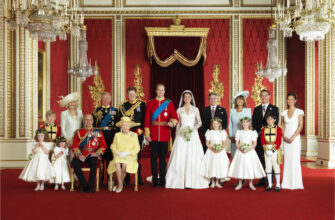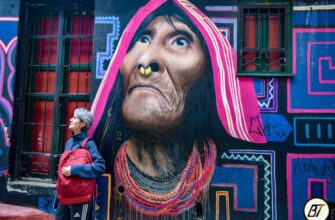When we talk about Halloween, we immediately imagine candlesticks made of pumpkins with carved faces, scary costumes and masks at masquerades, a bunch of artificial blood and decor-ghosts that are made from a long-forgotten sheet in the pantry of the house. And what does this holiday really mean and why can’t it take roots in Russia in any way?
How the harvest festival turned into All Saints’ Day
Originally, Halloween was a holiday of the ancient Celts called Samhain, which represented the end of the agricultural year and the beginning of the next. The Celts divided the year into two equal halves: light (summer) and dark (winter). However, the culmination of the holiday fell on the night from October 31 to November 1 — the junction of the two halves. The Celts believed that this night of the outgoing year was the most mystical.
According to legends, it was at this time that terrible evil spirits penetrated into the world of the living, and in order to scare them away, the Celts extinguished the fire in the houses, painted their faces and put on costumes, and then went to jump over bonfires and sing songs.
In order for the spirits not to enter the houses, the Celts left terrible scarecrows, watchmen — carved figures from fodder turnips. In order to appease the spirits, treats were placed at the dwellings (hence the tradition of caroling).
After the adoption of Christianity, Samhain and other Celtic amusements were banned, and in the VIII century Pope Gregory III decided to postpone All Saints’ Day to November 1.
So, the night of October 31 became the eve of the holiday (All Hallows day — All Saints’ Day).
Where did Jack’s pumpkin come from?
In England, Ireland and Scotland, Halloween lanterns were originally made from potatoes, beets and turnips. They were cleaned, holes were cut in them and candles were placed inside — fire was very important for many peoples, including the Celts. An improvised lantern was placed near the dwellings, in the windows, to scare away evil spirits.
In the XVII century, the term “Jack with a lantern” first appeared in England.
“Jack with a lantern” was called night watchmen who walked around the streets and lit the road with hand lamps, inside which a candle burned.
A little later, Jack’s Lamp (Jack-o’-lantern) appeared — one of the main symbols of the Halloween holiday, which is a pumpkin carved in the form of a head with a candle inside. When the tradition of celebrating Halloween reached the USA, lamps began to be cut out of cheap and affordable pumpkins, and not from rap.
According to legend, there once lived in Ireland a miser and a drunkard named Jack, who on the eve of All Saints’ Day met the Devil himself in a bar.
Jack got very drunk and almost fell into the hands of the cunning Devil, but, thanks to his resourcefulness, offered him his soul in exchange for the last mug of beer. The devil agreed and immediately turned into sixpence to pay the bartender for a drink. Jack quickly put them in his pocket, where there was a silver cross, thereby the Devil could not get out again. Jack did not release the evil spirits until he promised him that he would not claim his soul for ten years.
He kept his word, and ten years later he returned for Jack, meeting him on the road. The devil was about to take the cunning man away, but he quickly realized and asked him to get an apple from the tree. Then Jack deceived the Demon again: he took out a knife and carved a cross on the trunk of a tree so that the Devil could not come back down to take the soul of the miser. Jack made him promise that he would never come after him again. The devil realized that there was no way out, and agreed. No one ever found out how the Devil managed to get down from the tree.
When Jack died a year later, heaven did not accept him, because he led a riotous life, was a stingy and deceitful person. Then Jack went down to hell, but the Devil refused him, because he promised Jack that he would never take his soul.
Since then, Jack has been wandering the earth with a lantern in his hands until the Day of Judgment (finally, the Devil threw him a coal straight from Hell).
An interesting coincidence is that the pumpkin symbolizes the original meaning of the holiday — the harvest, the end of the agricultural year.
“This holiday is from the Evil”: why don’t many people in Russia accept Halloween?
For Russia, Halloween is a relatively new and unusual holiday.
For many, this day is associated with the revelry of all kinds of evil spirits, some don’t recognize it for religious reasons, and some simply do not understand the meaning of All Saints’ Day.
Nevertheless, the ancient traditions have undergone changes and still exist: instead of animal skins on Halloween, it is customary to wear costumes and make bright makeup, in many countries the treat for spirits today goes to children who go from house to house in the evening. And the main symbol has remained unchanged: before the holiday, many families cut Jack’s faces out of pumpkins and put candles inside to somehow decorate the apartment.
In Russia, the Russian Orthodox Church has been categorically opposed to the holiday all the time, and primarily because of the negative impact of the holiday on the younger generation. But we have a very similar pagan holiday that everyone loves and is waiting for, a holiday with pagan overtones that symbolizes the change of seasons — Maslenitsa. Only instead of sweets – pancakes, and instead of “Jack lanterns” in the shape of a pumpkin – a straw effigy, which is burned at the end of the festive week.
Usually, a few days before the holiday, many cafes and restaurants, establishments and even just residential buildings are decorated with garlands, pumpkins, cobwebs or something mystical. The Eve of All Saints’ Day can be spent at a themed party with friends or arrange a family holiday with the most loved ones, dressed in costumes of witches, ghosts and vampires.
If you are a fan of crowded parties, then in restaurants or nightclubs in Moscow or St. Petersburg they will be held in abundance, while in other cities this holiday is not celebrated so widely.








